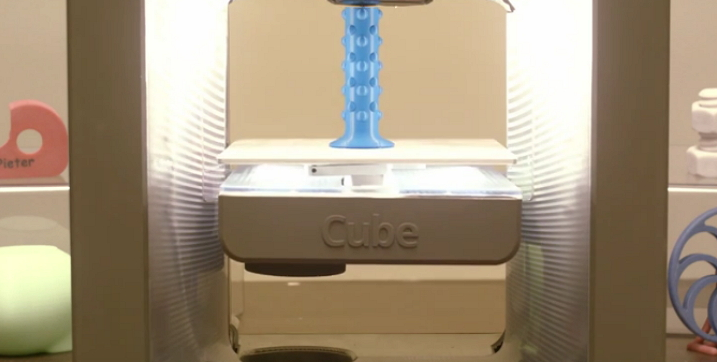Carlen Costa, or as she’s perhaps better known on the Interwebs, Dr Carlen, is a Canadian sexologist and relationship expert who wants you to feel comfortable “communicating, behaving, loving and translating your own sexual energy into satisfying your fantasies and desires.”
She’s recently penned an “investigative” piece for The Huffington Post on how technology, mechanophilia and robot fetishism have, for lack of a better word, penetrated the public consciousness in recent years.
As a logical extension of that postulate, Costa teamed up with Diply and Tech Alley of ISP Canada to 3D print a ribbed, sexual manipulation and satisfaction device.
Okay, that was a little euphemistic even for a family-friendly site like ours. The object in question was a rather bumpy-looking Blue Dildo, and the team took a time lapse video of the build process which you’re probably going to think is perhaps a touch NSFW.
Costa did include a whole list of caveats and warnings regarding the use of the device, so should you want to take on this project yourself, you’d do well to heed her advice on this.
The Good Doctor says that while there are a bunch of, ahem, ‘open source’ product designs which you could use to prepare this 3D Printed Wedding Tackle – she got her files from
While the Doctor was more than willing to share the experience of using a 3D printer to build what might be called a 3D Johnson, she did fail to mention whether or not she actually, in the spirit of scientific rigor, performed any personal or volunteer testing of the Blue Device.
She did provide some tips and tricks as it were, and one of them made me involuntarily suffer a bit of a vicarious cringe: “Polish your sex toy using sandpaper. As 3D printing technology works by making an object layer by layer, microscopic gaps and ridges create the probability of the product being dangerous for internal use.”
Sandpaper. Yowch.
Costa adds that printing in Acrylonitrile Butadiene Styrene (ABS) plastic, while it is phthalate-free and hypoallergenic, it’s only safe if the object of your current desire features a “smooth, non-porous finish” and it is regularly cleaned following “every usage” with a washcloth, warm water, and anti-bacterial soap.
“This is not a dishwasher safe activity, either (my lackadaisical lovers),” she adds.
It also went unsaid as to whether size actually does matter when it comes to the “build volume” of the printer to take on the job. In the interest of full disclosure, it might be best to warn anyone trying to replicate this project that the print area of a Cube 3D printer is a modest 154.2 x 154.2 x 154.2 mm (we leave it to you, dear reader, to convert those dimensions into inches), a size which might prove inadequate for some users. The printing process took some 4.5 hours to complete, which is presumably a much longer time frame than the resulting ‘tool’ might be put into action in any given session.
Good times, eh?
Do you plan to print out one of these dild…Oh, never mind. You can post your opinion – at length – in the 3D Printed Wedding Tackle forum thread on 3DPB.com.
And the Dutch weigh in…
